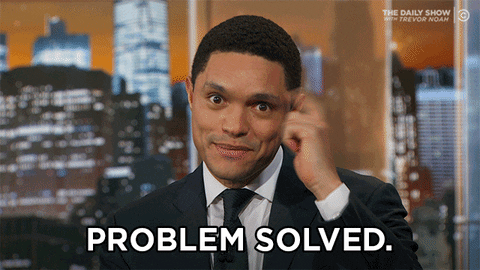
This logo isn't an ad or affiliate link. It's an organization that shares in our mission, and empowered the authors to share their insights in Byte form.
Rumie vets Bytes for compliance with our
Standards.
The organization is responsible for the completeness and reliability of the content.
Learn more
about how Rumie works with partners.

Problems keep mounting so fast that we find ourselves taking short-cuts to temporarily alleviate the tension points — so we can move onto the next problem.
Whether you're solving a problem for a client (internal or external), supporting those who are solving problems, or discovering new problems to solve, the problems you face can be large or small, simple or complex, and easy or difficult.
Problem solving is the act of defining a problem; determining the cause of the problem; identifying, prioritizing, and selecting alternatives for a solution; and implementing a solution. Problem solving is the essence of what leaders exist to do.
The Problem Solving Process
 1. Define the problem
1. Define the problem
Differentiate fact from opinion
Specify underlying causes
State the problem specifically
Identify what standard or expectation is violated
Determine in which process the problem lies
Avoid trying to solve the problem without data
 2. Generate alternative solutions
2. Generate alternative solutions
Postpone evaluating alternatives initially
Include all involved individuals in the generating of alternatives
Specify alternatives consistent with organizational goals
Specify short- and long-term alternatives
Brainstorm on others' ideas
Seek alternatives that may solve the problem
 3. Evaluate and select an alternative
3. Evaluate and select an alternative
Evaluate alternatives relative to a target standard
Evaluate all alternatives without bias
Evaluate alternatives relative to established goals
Evaluate both proven and possible outcomes
State the selected alternative explicitly
 4. Implement solution & follow up
4. Implement solution & follow up
Plan and implement a pilot test of the chosen alternative
Gather feedback from all affected parties and seek acceptance or consensus
Establish ongoing measures and monitoring
Evaluate long-term results based on end solution
Quiz
When it comes to problem solving, for the first step of defining the problem, how do you find out what caused it?
Gather as much information as you can so you can understand the roots of the problem.
Most Effective Ways Leaders Solve Problems

As leaders, the goal is to minimize the occurrence of problems.
Transparent Communication: Effective communication towards problem solving happens because of a leader’s ability to facilitate an open dialogue between people who trust their intentions and feel they are in a safe environment to share why they believe the problem happened as well as specific solutions.
Break Down Silos: Organizational silos are the root cause of most workplace problems and are why many of them never get resolved.
Open-minded People: Open-minded people see beyond the obvious details before them and view risk as their best friend. They tackle problems head-on and get on with the business of driving growth and innovation.
A Solid Foundational Strategy: Without strategy, change is merely substitution, not evolution. A solid strategy must be implemented in order to solve any problem.
Take Action

Problem-solving starts with identifying the issue, coming up with solutions, implementing those solutions, and evaluating their effectiveness.
This Byte has been authored by
Oluwatofe Adejumo
Learning and Development Specialist